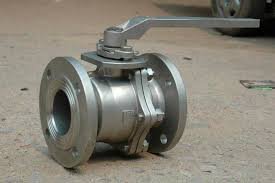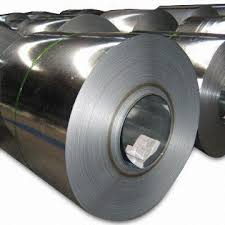Steel, a term that really portrays a whole group of metal compounds, is an adaptable and regular kind of metal with a wide assortment of uses and employments. There are numerous levels however most sorts of steel fall into two general classifications, carbon prepares and Duplex steels. Despite the fact that they have a similar fundamental structure of iron and carbon, steel types will in general have an assortment of alloying components. Carbon steel will in general have under 10.5% chromium content, yet steel must be at any rate 10.5% chromium to be viewed as pure. These distinctions give each sort of steel its particular properties.
Steel is a compound made out of iron and carbon. The carbon rate can change contingent upon the evaluation, and generally, it is somewhere in the range of 0.2% and 2.1% by weight. In spite of the fact that carbon is the principal alloying material for iron, some different components like Tungsten, chromium, manganese can likewise be utilized for this reason. Various sorts and measures of alloying components utilized decide the hardness, malleability, and rigidity of steel. While in Carbon Steel, Carbon as the primary alloying component. In carbon steel, the properties are for the most part characterized by the measure of carbon it has. For this compound, the measures of other alloying components like chromium, manganese, cobalt, tungsten are not characterized.
Duplex steel has a high chromium content that frames an undetectable layer on the steel to forestall erosion and recoloring. Carbon steel has a higher carbon content, which gives the steel a lower dissolving point, greater flexibility and sturdiness, and better heat distribution.
Duplex stainless steel

Duplex stainless steels are a mix of both austenite and ferrite microstructures. Subsequently, they are a lot higher quality and impervious to push erosion splitting, albeit marginally harder to create and with lower durability. They are reasonable for use in applications between – 50degC and +250degC. Because of their expanded quality and consumption opposition, they are appropriate for applications in more forceful conditions, for example, Oil and Gas, compound cycle enterprises, and marine situations.
Duplex stainless steels are designated “duplex” since they have a two-stage microstructure consisting of grains of ferritic and austenitic stainless steel. The image shows the yellow austenitic stage as “islands” encompassed by the blue ferritic stage. At the point when duplex stainless steel is liquefied, it cements from the fluid stage to a totally ferritic structure. As the material cools to room temperature, about a portion of the ferritic grains change to austenitic grains (“islands”). The outcome is a microstructure of generally half austenite and half ferrite.
The duplex structure gives this group of stainless steels a mix of alluring properties:
Quality: Duplex stainless steels are about twice as solid as normal austenitic or ferritic treated steels.
Sturdiness and flexibility: Duplex stainless steels have altogether preferred durability and flexibility over ferritic grades; notwithstanding, they don’t arrive at the brilliant estimations of austenitic evaluations.
Erosion opposition: As with every single stainless steel, consumption obstruction relies generally upon the arrangement of the treated steel. For chloride pitting and hole erosion opposition, their chromium, molybdenum, and nitrogen content are generally significant. Duplex stainless steel grades have a scope of erosion obstruction, like the range for austenitic stainless steels, i.e from Type 304 or 316 (for example LDX 2101©) to 6% molybdenum (for example SAF 2507©) stainless steels.
Stress erosion breaking obstruction: Duplex stainless steels show generally excellent pressure consumption splitting (SCC) opposition, a property they have “acquired” from the ferritic side. SCC can be an issue in specific situations (chlorides, mugginess, raised temperature) for standard austenitic, for example, Types 304 and 316.
Cost: Duplex treated steels have lower nickel and molybdenum substance than their austenitic partners of comparable erosion opposition. Because of the lower alloying content, duplex stainless steels can be lower in cost, particularly in the midst of high combination overcharges. Moreover, it might frequently be conceivable to decrease the segment thickness of duplex stainless steel, because of its expanded yield quality contrasted with austenitic treated steel. The mix can prompt huge expense and weight reserve funds contrasted with an answer in austenitic treated steels
Carbon steel, then again, has far lower chromium levels, and is rather a carbon-iron combination with just a couple of different materials, assuming any, as a major aspect of its cosmetics. Accordingly, it tends to be alluded to as ‘low-combination’ steel. Both treated steel and carbon steel highlight this fundamental organization, however, carbon steel can be characterized by its carbon content. This is typically around 2-2.5%, anyway this frequently shifts. In spite of the fact that helpless to rust not at all like stainless steel, carbon steel is frequently less expensive and has its own fluctuating mechanical properties dependent on carbon content.
Low-carbon preparations are more fragile and milder, yet can be machined and welded effectively; while high-carbon steel is more grounded, however altogether harder to measure.
Types of Carbon Steel
The characterizing component of any carbon steel combination is its carbon content, thus this is the means by which the different kinds of carbon steel are requested and arranged.
Low-carbon steel: the most generally utilized type of carbon steel, with a carbon substance of under 0.25% – they are normally moderately more vulnerable and gentler yet more effortlessly welded and flexible, as are frequently used to machine and weld for an ease
Medium-carbon steel: with a carbon substance of 0.25-0.6%, and a manganese substance of 0.6-1.65%, these metals can be improved through warmth treatment, however, this must be performed on exceptionally slender segments except if extra alloying components are included – this prepare is more grounded yet less malleable than lower-carbon prepares

High-carbon steel: this is the hardest and hardest carbon steel, with the least flexibility, very wear-safe, and quite often solidified and tempered – they will in general have a carbon content from 0.6-1.25% and manganese of 0.3-0.9%
Advantages
- Expanded quality
- More affordable than stainless steels
- Wear-safe
- Tough and stun safe
- Safe to deal with and work with contrasted with different metals
- Naturally agreeable and simple to reuse
Disadvantages
- Solid and in some cases hard to work with
- Fragile, not effortlessly bowed or formed
- More helpless to rust and erosion
- Less appealing appearance, can’t accomplish the completion of stainless steel



 WhatsApp Us
WhatsApp Us